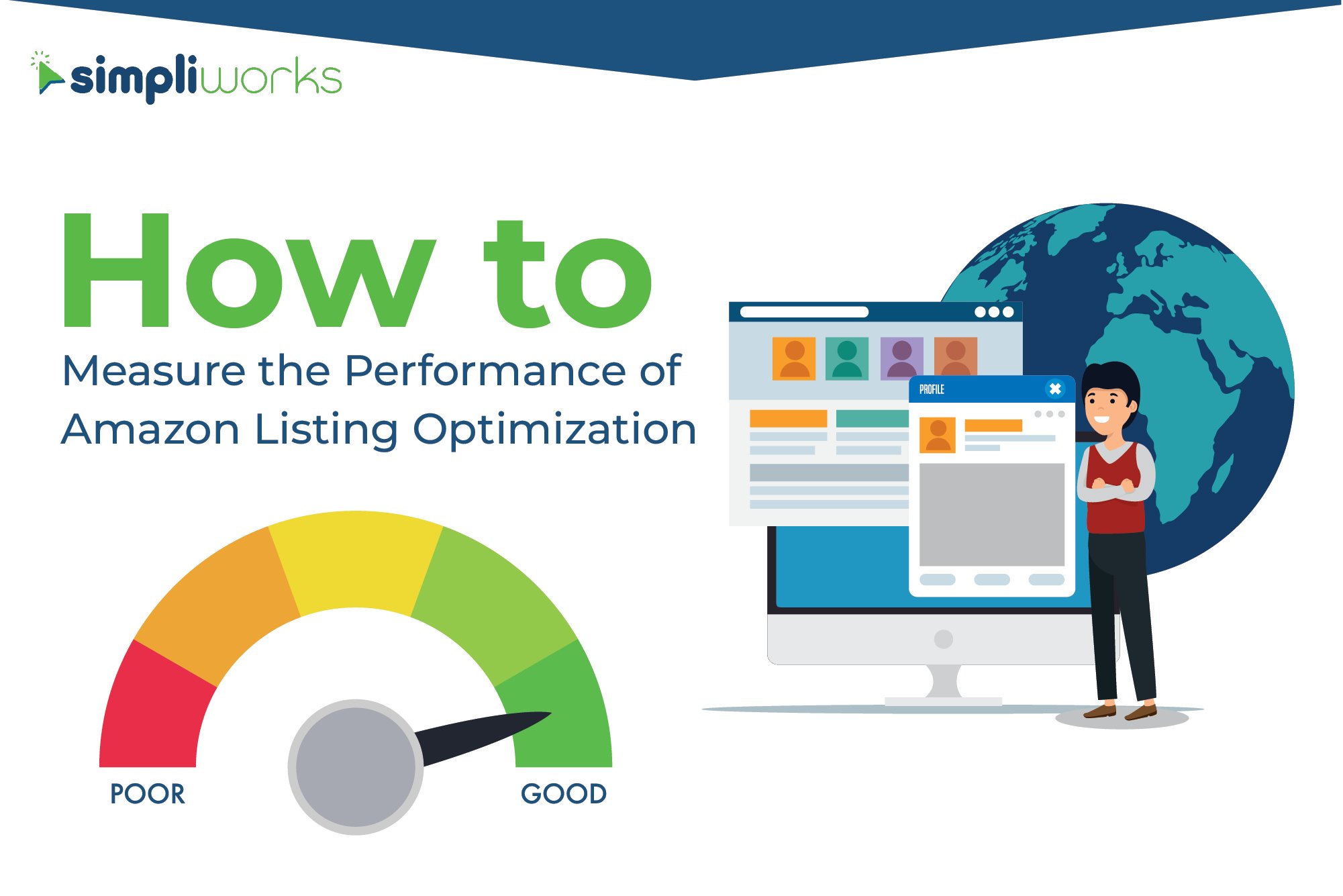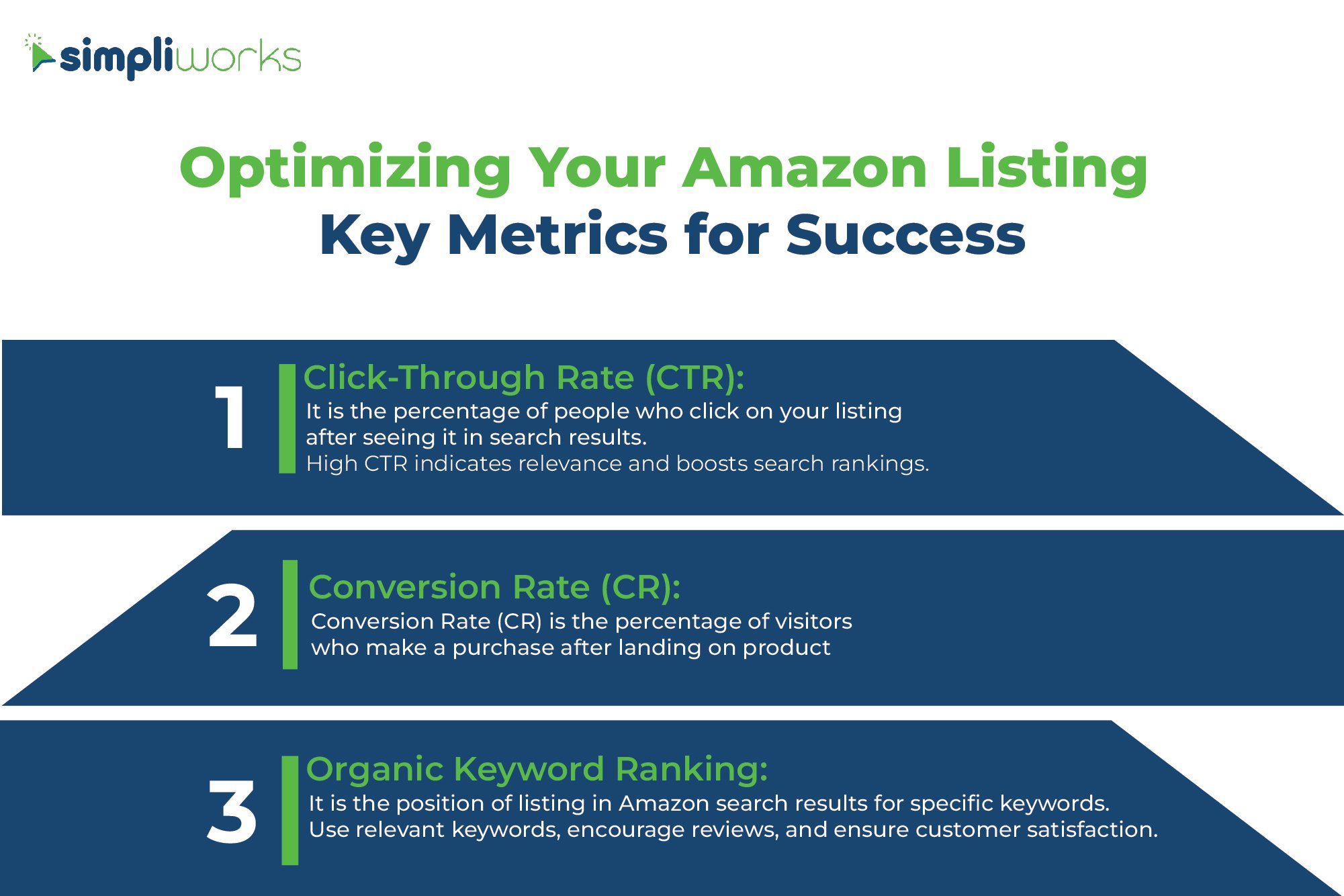In Amazon's vast and competitive landscape, having a strong brand identity isn't just a luxury;...
How to Measure the Performance of Amazon Listing Optimization?
Amazon listing optimization is the process of fine-tuning your product listings to maximize visibility, click-through rates, and conversions. It involves the strategic placement of relevant keywords, compelling product descriptions, high-quality images, and other elements that entice potential customers to engage with your listings.

Measuring the performance of optimization strategies is crucial for understanding what works and what needs improvement. Without proper tracking and analysis, it's challenging to gauge the impact of your efforts and make data-driven decisions to enhance your listings. In this article, we aim to provide you with actionable insights that will enable you to improve the effectiveness of your optimization efforts and achieve higher rankings and visibility on the Amazon platform.
Read our latest blog: Finding Hidden Opportunities with Amazon Data and Analytics
Key Metrics to Track
As you delve into measuring the effectiveness of Amazon listing optimization, certain key metrics should be closely monitored. Let's explore these essential metrics and their implications on your rankings and performance.
Note: You can find valuable information related to these key metrics in the business reports section of your Seller Central account. Regularly accessing these reports will provide you with comprehensive data to assess the performance of your listings and make informed decisions.
1. Listing Traffic(Sessions)
Listing Traffic, also referred to as "Sessions," represents the number of times potential customers visit your product listings. A well-optimized listing should see increasing levels of organic traffic every month due to SEO efforts.
In the Amazon Business Reports, look for the "Sessions" metric to gauge the level of traffic your listings are receiving. Monitoring this metric regularly helps you understand the impact of your optimization strategies on attracting potential buyers.
Amazon's algorithm values listings with high Sessions, which signifies that the product is popular among customers. As a result, higher sessions can lead to improved search rankings and increased visibility, ultimately driving more potential buyers to your listings.
2. Conversion Rate (CR)
Conversion Rate (CR) is the percentage of orders received compared to the number of sessions (listing traffic) your product page receives. A high conversion rate indicates that your listing effectively convinces customers to make a purchase.
How to Calculate CR for Amazon Listings:
To calculate CR, divide the number of orders by the total number of sessions (listing traffic) to your product page, and then multiply by 100.
CR = (Orders / Sessions) * 100
Note: While the formula for conversion rate can also be expressed as "Orders / Visitors," Amazon uses "Sessions" to represent listing traffic, and "Sessions" and "Visitors" are used interchangeably in this context.
Several factors can influence your conversion rate, including product pricing, images, descriptions, and customer reviews. To improve your CR, focus on creating persuasive product descriptions, using high-quality images, and maintaining competitive pricing.
3. Organic Keyword Ranking
Organic keyword ranking refers to the position of your product listing in Amazon's search results for specific keywords. The higher your ranking, the more likely your listing will be seen by potential customers.
Various tools are available that can help you track your keyword rankings on Amazon. Regularly monitoring ranking for target keywords allows you to identify trends and adapt optimization strategies accordingly.
Focus on relevant and high-impact keywords in your product title, bullet points, and product description to improve your keyword ranking. Additionally, encourage customer reviews and maintain high customer satisfaction, as these factors can positively influence your organic visibility.
Monitoring Customer Reviews and Feedback
Customer reviews play a pivotal role in determining the overall performance of your Amazon listings. Monitoring and analyzing customer feedback is crucial to gaining valuable insights and improving your listing's success.
1. The Role of Customer Reviews in Listing Performance
Customer reviews serve as social proof and can significantly impact potential buyers' decision-making process. Positive reviews build trust and credibility, while negative reviews can deter customers from making a purchase.
2. Analyzing Customer Feedback for Insights
Pay close attention to the themes and sentiments conveyed in customer reviews. Identify recurring issues or praises mentioned by customers. This information can help you understand what aspects of your product need enhancement or what features are most appreciated.
3. How to Address Negative Reviews and Improve Product Reputation
Address negative reviews promptly and professionally. Reach out to unhappy customers, understand their concerns, and offer appropriate solutions. Demonstrating excellent customer service can turn a dissatisfied customer into a loyal advocate for your brand.
Assessing Sales and Revenue
Tracking your sales performance and revenue generated from Amazon listings provides critical data for evaluating the effectiveness of optimization efforts.
A. Tracking Sales Performance Over Time
Record your sales over specific periods, such as weeks, months, or quarters. Analyze the trends to identify any fluctuations or patterns in sales. This information can help you spot seasonal variations or the impact of marketing campaigns.
B. Understanding Revenue Generation from Amazon Listings
Understand the revenue generated from each product listing by considering the product's price, number of units sold, and associated costs. This will help you identify high-performing products and optimize your pricing strategy.
C. Correlating Optimization Efforts with Sales Growth
Compare your optimization activities with the sales data to gauge their impact on revenue. By identifying which optimization strategies positively influence sales, you can allocate resources to the most effective tactics.
Discover the 10 proven steps that will help you optimize, strategize, and maximize your profits on the world's largest online marketplace and Learn the secrets to success with our comprehensive list on Amazon Account Management.
Utilizing Amazon Analytics and Seller Central
Leverage Amazon's built-in analytics tools and Seller Central to access valuable data that can guide your optimization efforts.
A. Overview of Amazon's Built-in Analytics Tools
Amazon provides various analytics tools, including Amazon Brand Analytics, Amazon Retail Analytics, and Amazon Advertising Reports. Familiarize yourself with these tools to gain insights into customer behavior and competitor analysis.
B. Navigating Seller Central for Valuable Data
Seller Central offers a wealth of data related to your products' performance, inventory levels, and customer feedback. Regularly review this information to stay informed about your listings' performance.
C. Extracting Actionable Data from Amazon's Reports
Look for patterns and trends in the data obtained from Amazon's reports. Identify high-performing products, popular keywords, and sales trends that can help your optimization strategy.
Also Read: Why Should You Hire an Amazon Account Management Company?
Conclusion
In conclusion, measuring the performance of Amazon listing optimization is critical for achieving sustained success on the platform. By tracking key metrics such as Listing Traffic(Sessions), CR, organic keyword ranking, and customer reviews, you can identify areas of improvement and make data-driven decisions to enhance your listings.
We encourage you to regularly monitor Amazon's analytics tools, Seller Central, to refine your optimization strategies continually. By adopting a proactive and data-centric approach, you'll be well-positioned to surpass competitors and achieve higher rankings and visibility on the Amazon platform.
Remember, Amazon's landscape is ever-evolving, so staying vigilant and adaptable is essential to maintain your competitive edge and ensure long-term success as an Amazon seller.




.png?height=200&name=Building%20a%20Strong%20Brand%20Identity%20(1).png)

